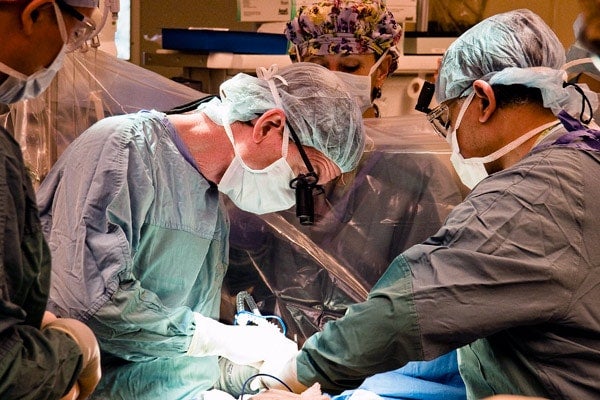
Veins versus arteries
Published: June 25, 2012
Heart surgery patients fare better when surgeons bypass their blockages using arteries grafted from an arm rather than veins grafted from a leg, U of T research shows.
The Radial Artery Patency Study, published on-line in advance of publication in the July issue of the Journal of the American College of Cardiology, found that a radial artery taken from a patient’s wrist or arm, versus a saphenous vein from the leg or thigh, provides the best outcome five years after coronary artery bypass grafting.
“Previous studies have indicated that the radial artery is not much better than a saphenous vein graft, but this new study challenges that,” says Dr. Stephen Fremes, principal investigator and professor at the University of Toronto, and also Head of the Division of Cardiac Surgery at Sunnybrook Health Sciences Centre.
The randomized study, which involved nine Canadian centres and was funded by the Canadian Institutes of Health Research (CIHR), looked at 269 patients approximately 7.5 years after having a heart bypass.
The radial artery outperformed the saphenous vein, with 12 per cent of patients having a functional graft occlusion (blockage) versus 19.7 per cent of patients who received a saphenous graft. In addition, significantly fewer radial artery grafts became completely occluded at 8.9 per cent, compared with saphenous vein grafts at 18.6 per cent.
Most patients who undergo coronary artery bypass grafting have multiple vessel disease and multiple bypasses. In the RAPS study, the number of bypasses was three and a half. Each patient in the study received both a radial artery graft and a saphenous vein graft at two vessel sites, so the randomization was within the patient, not between patients.
Based on the results, authors recommend a radial artery as a second or third conduit, after a mammary (chest/thoracic) artery.
“The radial artery is a good second option for grafting after the internal mammary artery because of its length, diameter, wall thickness and also because of the lack of harvest-site complications,” adds Fremes. “Radial artery bypass grafts should be used preferentially for the most severely narrowed coronary arteries.”
In comparison to other studies on this topic, which were single site and observational in nature, this study was randomized through several centres.
“The data is real and reproducible,” says Fremes.



